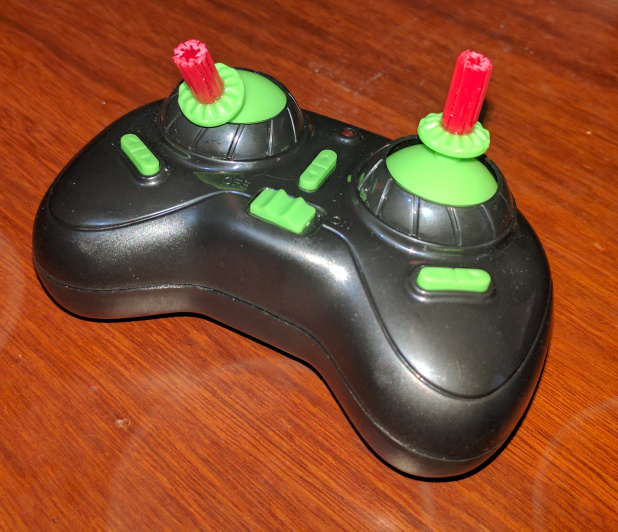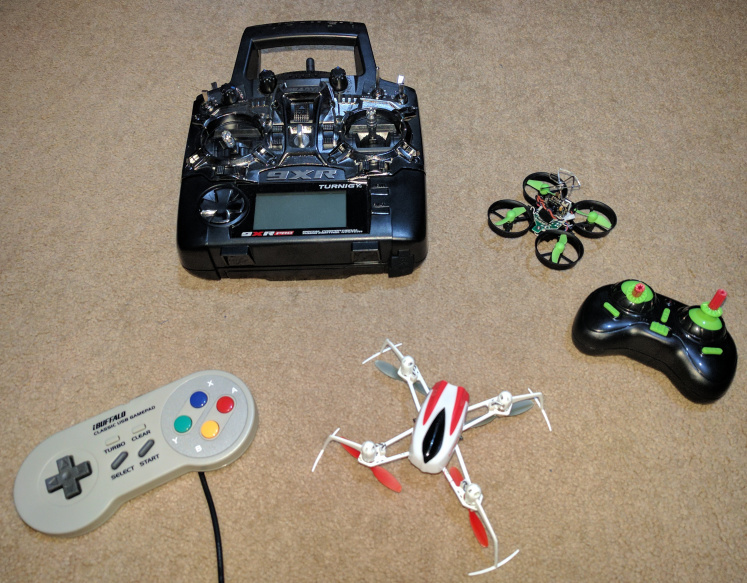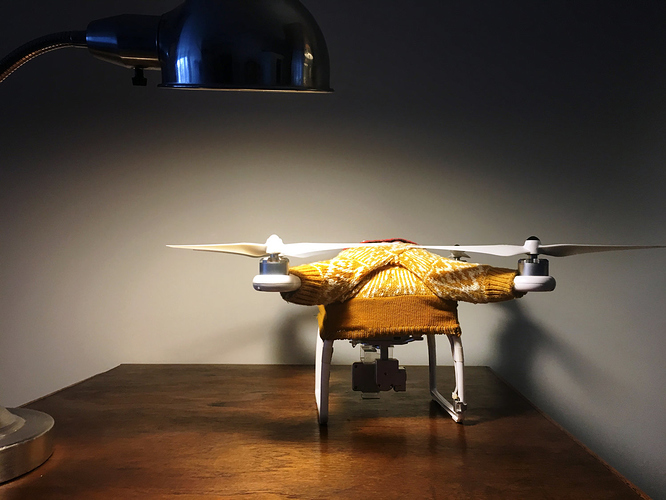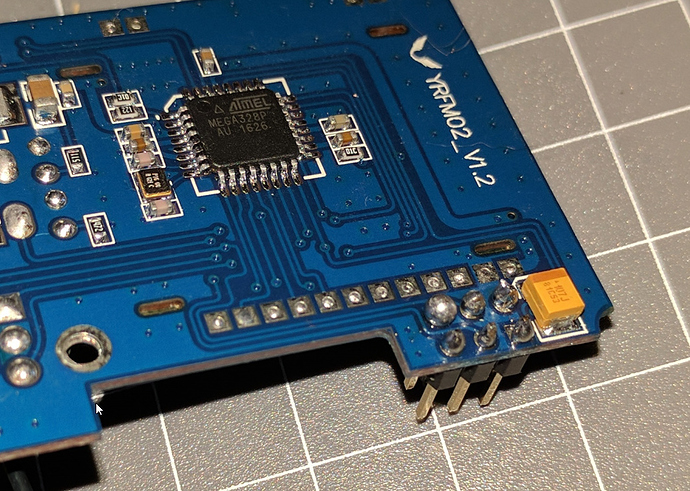Hilarious. The most common seems to be “flew too high and it took off. We lost it”. Too bad they don’t list the make / model of the drone! Probably some interesting data about that.
My son got a toy drone and I went to do a little research on it, ended up amusing myself reading all the 1 star reviews. I am not one for schadenfreude, and I too would leave a one star review if it happened to me, but holy shit are they hilarious in aggregate.
We got a toy drone for xmas. Small little Chinese thing with a range of only 300ft, and a small battery (600maH or whatever the units are), so it lasts a whopping 10min. Interestingly, it does have a video camera on it. It is a lot of fun, even if not one of the beastly real drones.
Oh, and no thanks for posting this. I really don’t need to drop $1k+ on a drone and you are not making that easy.
I am shocked and saddened by the sheer volume of people who believe in all seriousness that their $50 drone will continue to climb, reaching outer space, after it exceeds the 20m transmission range cutoff.
But I will let you all in on a little secret: I had so much fun howling at some of these posts that I started a new twitter account to retweet the best, and worst. If you care to see it, it’s:
www.twitter.com/LostMyDrone
Still no shipping :(
Shipped! Now to find a Go Professional Case in stock somewhere!
FPV time!
Bargain basement jobby Eachine E010, canopy removed with a Eachine TX01 camera soldered onto the existing battery pads and props chopped down to two blade.
Holiday sale prices were on offer so the 'copter was $18!
It flies! And worked with the headset I got with a minimum of fuss. Not a lot of options on these quads. Only one flight mode, auto-flips and headless modes. Slow and sedate would be the best way to describe its flight characteristics, but should be very good for tooling around the house to get used to FPV (which is a bit harder than anticipated).
Not helped by the rather average TX unit these things ship with.
Note the hack job to get some reach on the sticks for finer control. It’s still fairly average as I don’t think there is all that much resolution on the sticks. Control is…squirrely, even for a slow quad.
I need to get it bound to my Turnigy 9XR-PRO with the muti-protocol adapter in it. Apparently it should work, but I had not been able to get it to work with any of my quads. Until I had a gander today. Thought I may have botched a solder job that allows protocol selection from the TX menu (rather than having to rotate a dial). Think it may have been the fact I did not have the dial in the correct ‘default’ position as there is a teeny tiny arrow on the dial that was at 180 degrees to where is needed to be. After moving that to position and reassembling I managed to get it bound to my NanoQX 3D, so I at least know it works. Can’t get it to bind to the e010 or any others yet, but I barely know what I am doing.
I can report, however, that flying the NanoQX with a proper TX (even the budget Turnigy) compared to the OEM unit is like chalk and cheese. So much better control and so much easier to pilot.
Interesting @sharaleo, which adapter do you have in your transmitter that makes it compatible with the quad? Also which headset did you buy?
I like the thought of getting a low end practice unit.
In somewhat drone-related news:
Just a general note that while the little and inexpensive drones are fun to fly, they’re generally a lot more difficult to actually learn on because they’re so much more unstable. Though once you’ve mastered a nanodrone, something like a Mavic is super-easy.
I have the Air Hogs USS Enterprise (which is already more stable than the palm-size drones) and it’s way, way more challenging to keep it from running into things in my house than it is to fly my Mavic around outside at 35 mph. :)
On Parrot… Not surprised. Their drones were in a weird space between cheap and good. They didn’t cost as much as DJI’s stuff, but their video, control, and range paled in quality compared to DJI, and Parrot was cheaper but not cheap. My first drone was a Parrot AR.Drone that my wife got me, that did an uncontrolled flyaway on my second flight. Luckily I recovered it and it was only a little scratched up, so it went back into the box and back to Amazon for a refund.
People could spend $499 on a BeBop that takes cruddy video and has short Wi-Fi line-of-sight range or $699 on a Phantom 3 that shoots 4K from a mile away. If you’re cheap, you’re not going to spend the $499, and if you do any research you realize that you’re getting a hellaciously better drone if you spend the extra $200 on the DJI.
(Though I see B&H has the original BeBop for $199. That’s actually a reasonable price for that drone.)
It’s the 4:1 module from Banggood. It’s a custom board with four chips running Multiprotocol which allows it to transmit a wide variety of protocols. Takes a bit of mucking around, though part of the learning curve is just dealing with the TX itself and figuring out how to configure a model to begin with. Channels, channel order, inversion, rates, switches, modes, etc, etc, etc. Always take of your props when trying to bind!
You can also get one of the OrangeRX modules from Hobbyking and flash it it with Multiprotocol, presuming your TX has the right firmware or (in some cases) mods.
Headset is the Quanum FPV unit from Hobbyking which they had on sale for about $50 over the holidays.
Unstable is not really the right word - there is nothing particularly wrong with the flight code on them, that I have seen. Once trimmed, all of mine are nice and stable and hover reasonably statically. But they will almost certainly lack features like altitude and GPS hold, which can be a boon on your first flights.
What they suffer from mostly is average control and their biggest problem in that regard is the TX’s. Really cheap TX’s are not all that good. They lack resolution or are poorly sprung or have short throws, etc, all which can make actually flying them difficult.
The other issue could be where you choose to fly - a nano outdoors is always going to be more susceptible to wind than a larger, heavier bird, particularly if they are under-powered with a crappy controller.
But you are going to crash anyway, so better to do that with a cheapo that is a bit more difficult to control before getting something nicer! And they are still tons of fun to fly. And you can fly them indoors! :)
Cool:
So for the last few days I have been trying to get my multiprotocol module’s firmware updated so it will bind with the Eachine E010. Turns out that despite the protocol being available for selection in the menu, that does not mean it is actually loaded in the module firmware.
Finally, success!
Took a bit of faffing about, but mostly due to shit soldering on my part, followed by a suspected dud microcontroller programming unit.
So, note to self, if your soldering looks like this:
…it may pay to practice just a little before attacking your production board. Thankfully, it cleaned up ok and upon spending a few minutes practicing on a protoboard with my proper soldering iron instead of the portable butane unit, the joints came out a bit more respectable:
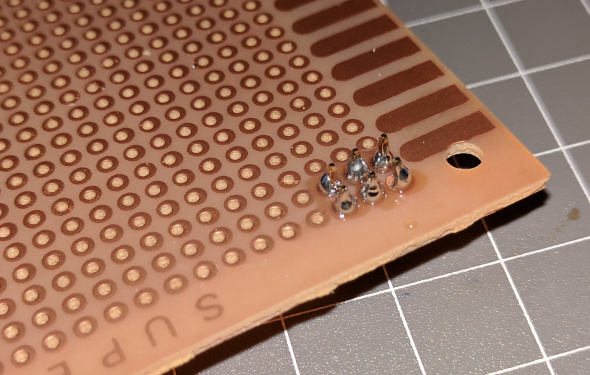
Like that, anyway, I forgot to take a pic of the actual board before putting it back in the case, so that is my practice run.
If you are familiar with Arduino, then flashing these will be no problem for you. But I am not. Essentially you use the Arduino IDE to compile the code yourself, commenting out any protocols and functionality you don’t need (and you will need to as they support way more protocols than can actually fit in the 32KB of available chip memory - hence why the E010 protocol was not in there from factory). Then you flash the unit via a USPASP or USBtinyISP ICSP programming module, which I gather is standard operating procedure for Arduino stuff.
Anyway, the $4 programming module I got from BangGood did not do the job and would not connect to the actual chip. I thought my soldering was still dodgy, but multi-meter checked the connections between the header pins and their respective chip pins and it all seemed fine. So I dropped down to Jaycar to grab a much more expensive (read better quality) programming unit to try again. Apparently these cheap Chinese jobbies are quite hit and miss.
Still took a bit of driver juggling to get the Arduino IDE to recognise the programmer, despite Windows device manager being happy (these things apparently all work natively on MacOS, FWIW), but I managed to get it successfully flashed in the end.
Then it bound with the E010 without any issues at all. Chalk and cheese. Wow, what a difference it makes in flying. I mean the TX that comes with the E010 is rubbish, but it is such a dramatic difference it’s crazy. If you want to fly and play with these cheap Chinese quads, this is a great way to improve them. As I said, this particular quad is nice and sedate, so great for indoor flying, but I still had problems with fine control through corridors and such. Not any longer!
Note, I still think these cheap quads are a great way to get into the hobby, regardless.
I’ll fly it FPV a bit later tonight and I am sure it will make a dramatic difference there.
I got my Go Professional Case. Highly recommended, Shultz approved!
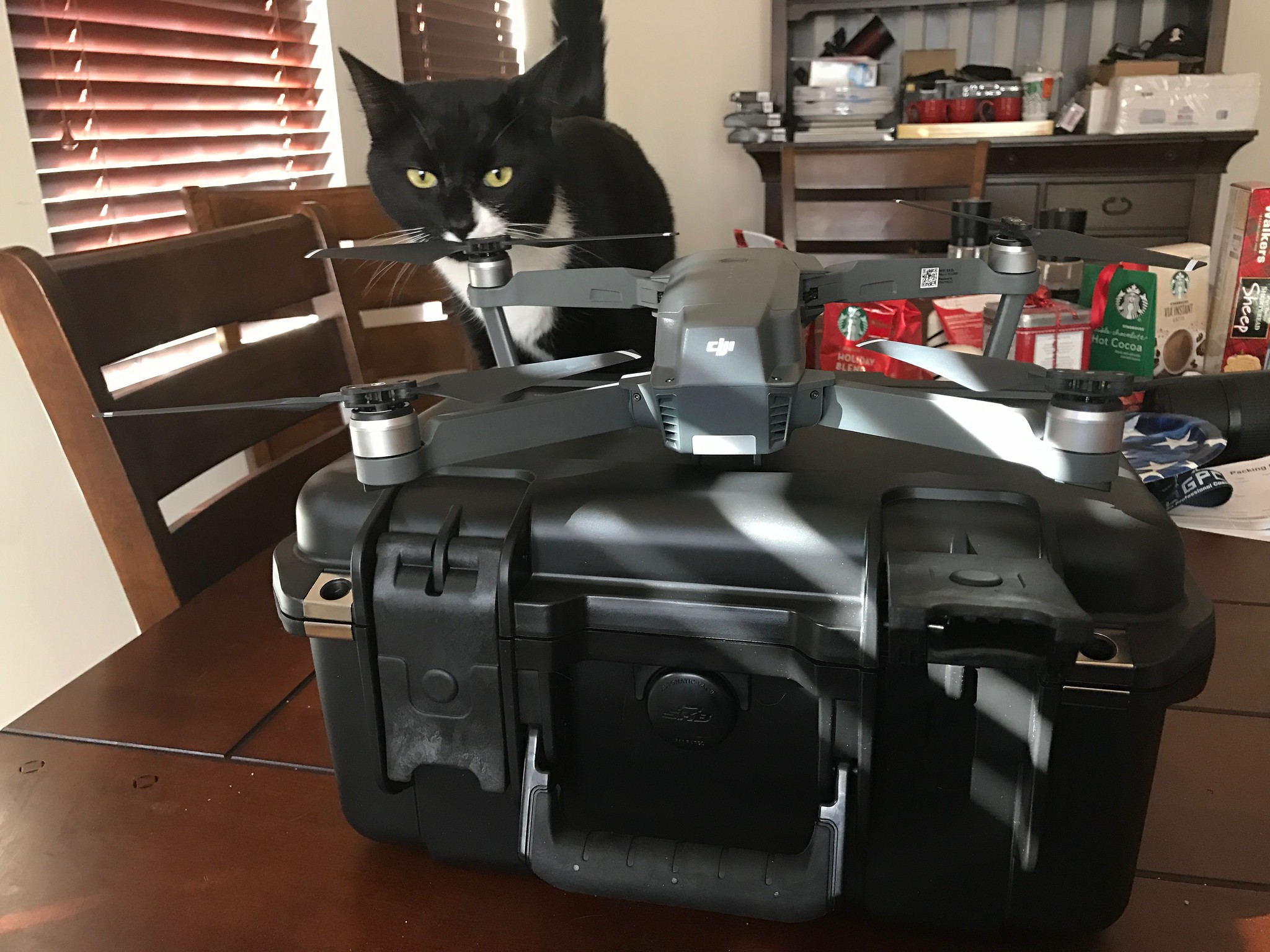
Shultz Mavic by Sam Posten III, on Flickr
I managed to avoid crashing my first two flights, I consider that a win. Played around a bit but shut down due to winds.
Banned in Hong Kong!

